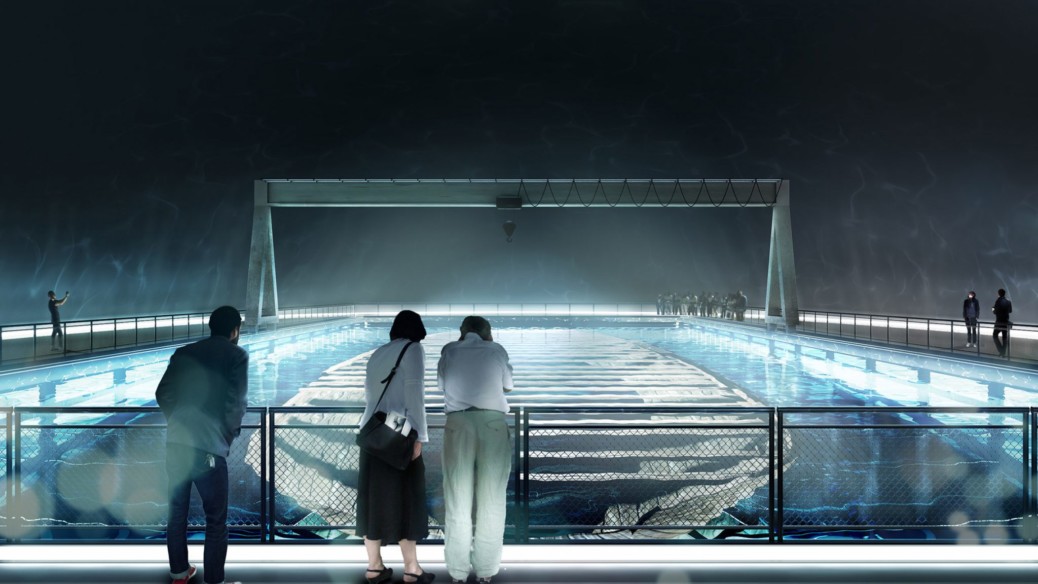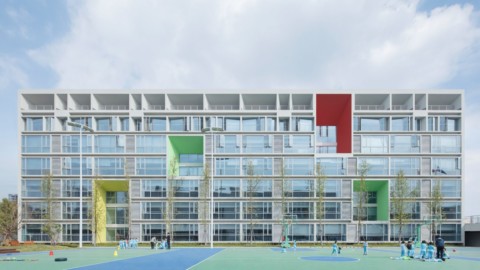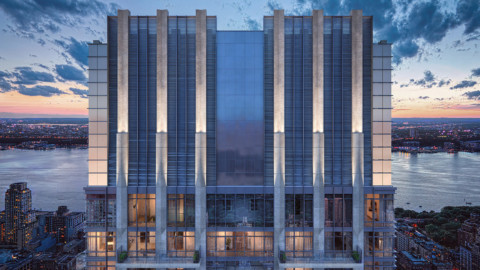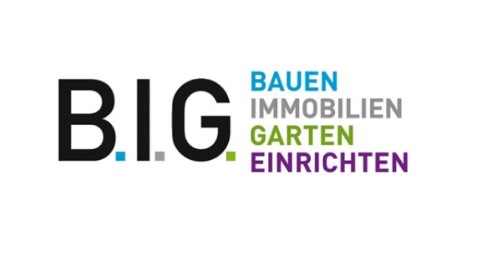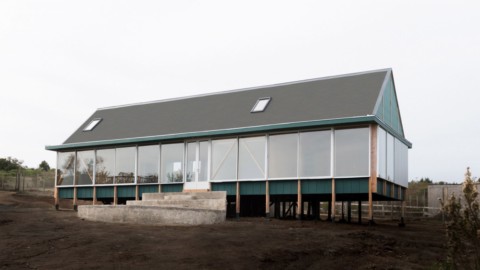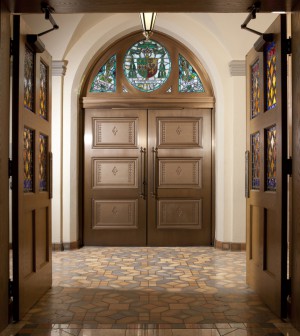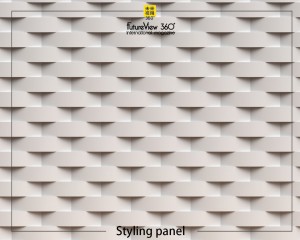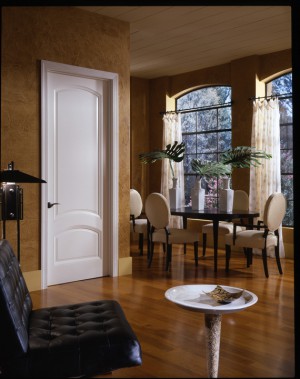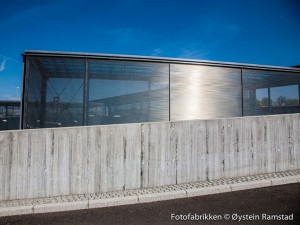Architecture studio ZJA has designed the concept for a museum in the Netherlands to house the wreck of the historic ship Amsterdam, which is currently sunk off the coast of Hastings, UK.
Named Docking the Amsterdam, the proposal will recover and relocate the wreck without ever taking it out of the water. A museum will then be built around a glass tank containing the wreck allowing visitors to view the 40-metre-long shipwreck from all angles.
ZJA建築工作室為荷蘭博物館設計了概念,以容納歷史悠久的阿姆斯特丹沉船殘骸,該沉船目前沉沒在英國黑斯廷斯(Hastings)海岸。
該提案名為Docking the Amsterdam,該提案將在不將殘骸撈出水中的情況下進行回收並重新安置。 然後,將在裝有沉船的玻璃罐周圍建立一個博物館,使遊客可以從各個角度觀看40米長的沉船。
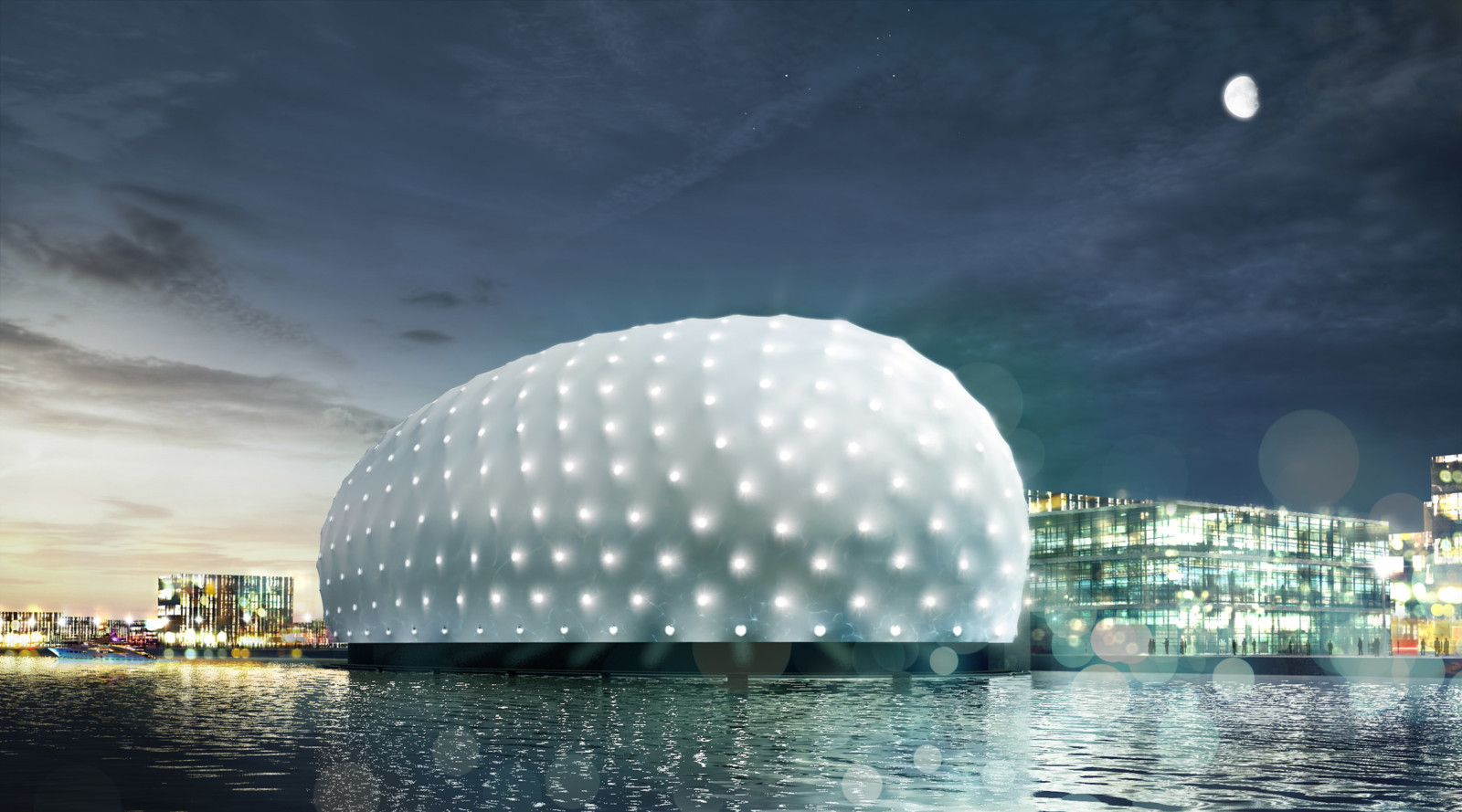
The Amsterdam ship was built in the 18th century by the Dutch East India Company (VOC) but was engulfed by sand on the English coast after becoming unsteerable in 1749 on its maiden voyage to Asia.
Though the ship’s exposed superstructure has since been destroyed, its hull and contents remain almost completely intact below the sand. The museum has been commissioned to save its remains from any further erosion.
Though the exact site for the museum is yet to be decided, the team is investigating locations in Amsterdam as this is where the VOC shipyard was located and the ship was built.
阿姆斯特丹的這艘船是由荷蘭東印度公司(VOC)於18世紀建造的,但在1749年首航前往亞洲後變得無法操縱之後,在英國海岸被沙子吞沒了。
儘管該船的裸露上層建築自那時起已被破壞,但其船體和內容物在沙子下仍幾乎完好無損。 該博物館已受委託保存其遺骸,以免受到進一步侵蝕。
儘管尚未確定博物館的確切地點,但團隊正在調查阿姆斯特丹的地點,因為這是VOC船廠所在的地方以及該船的建造地點。
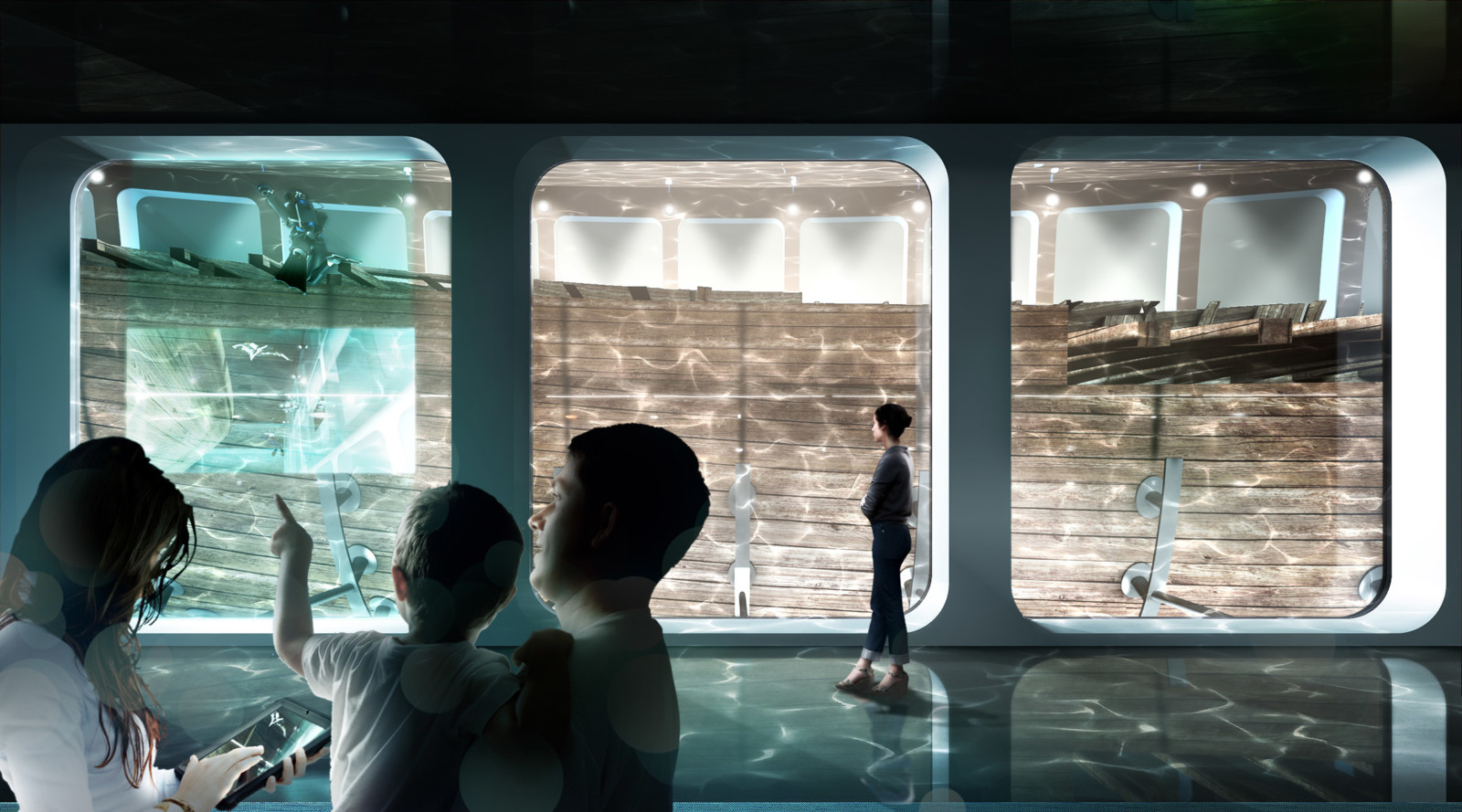
While salvaging the wreck from an unsafe site and creating facilities for archaeologists, the goal for Docking the Amsterdam is to shed light on Dutch maritime history.
This will include exhibition spaces designed by ZJA to spotlight the “complete story” of the VOC, focusing primarily on its involvement in slavery and the impact of this on today’s society.
“The urgency of the project is twofold,” ZJA told Dezeen. “Firstly, the ship was constructed by the VOC,” it told Dezeen.
“Today’s perspective on the history of colonialism, the slave trade and international trade makes reassessment and discussion essential. Secondly, the wreck is now in a place with a huge tidal range, the currents that accompany this are eroding the wreck.”
在不安全的地點打撈沉船並為考古學家創造設施時,停靠阿姆斯特丹的目的是闡明荷蘭的海洋歷史。
這將包括ZJA設計的展覽空間,以重點介紹VOC的“完整故事”,主要集中在其參與奴隸制及其對當今社會的影響上。
ZJA告訴Dezeen:“該項目的緊迫性是雙重的。” 它告訴Dezeen:“首先,這艘船是由VOC建造的。”
“今天對殖民主義,奴隸貿易和國際貿易歷史的看法使得重新評估和討論至關重要。其次,沉船處在一個潮汐很大的地方,隨之而來的潮流正在侵蝕沉船。”
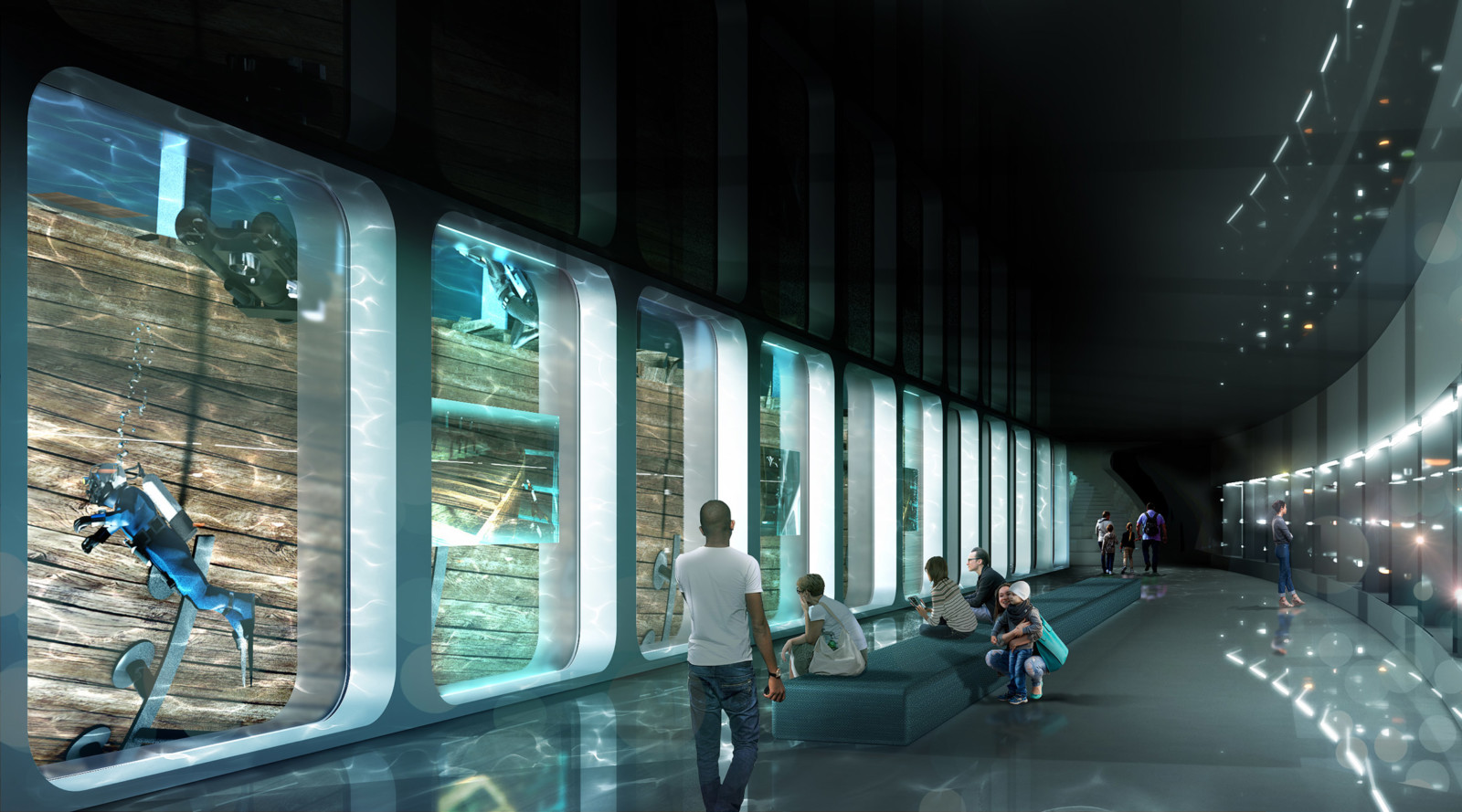
To relocate the Amsterdam wreckage safely, it will be lifted from the seabed using a large basin, or salvage dock, made from steel. This structure will also extract some of the water and sand surrounding the ship.
The basin will then be sailed to Amsterdam, where it will be permanently docked and transformed into an underwater museum.
Above water, the museum will be sheltered by a white, curved canopy, described by ZJA as a “protective blanket”. This will be made from tensile fabrics and also shelter a walkway at the top of the steel basin that will provide visitors with aerial views of the wreck.
為了安全地轉移阿姆斯特丹殘骸,將使用鋼製大水池或打撈碼頭將其從海底舉升。 這種結構還將提取船周圍的一些水和沙子。
然後,該盆地將航行至阿姆斯特丹,在那裡將永久停靠並變成水下博物館。
在水面之上,博物館將被白色彎曲的遮篷遮蓋,ZJA將其稱為“保護毯”。 這將由抗拉織物製成,並在鋼盆頂部設有走道,可為遊客提供沉船的鳥瞰圖。
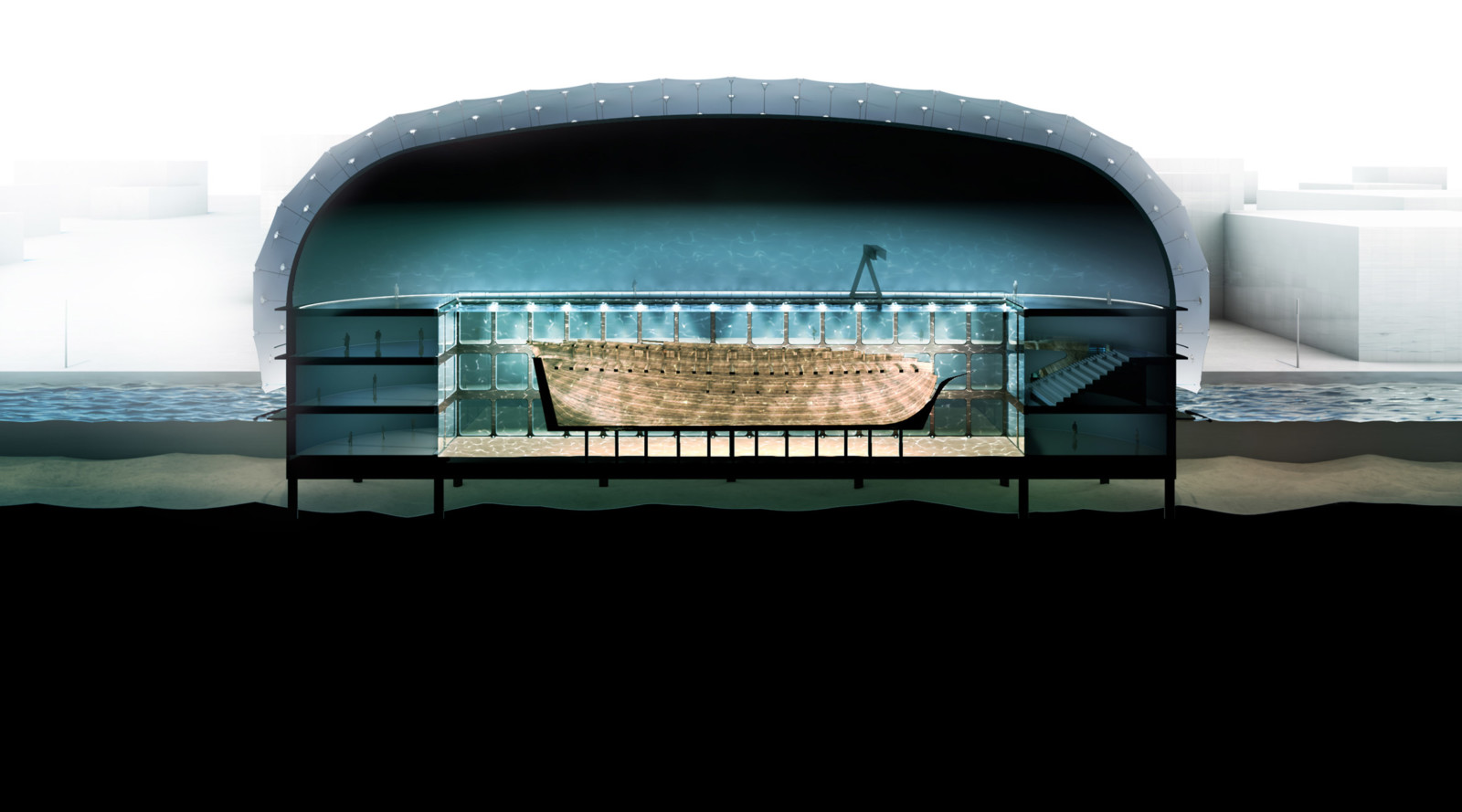
Few details have been disclosed about the museum’s interiors, though it is expected that the steel basin will be exposed throughout to give an industrial aesthetic.
Glass will be used to line the walls of the dock that face the shipwreck, allowing visitors to observe it from several angles and watch “live excavating” of the ship by diving archaeologists.
“Visiting this venue is like entering a theatre that stages the investigation in progress and engages the public with the discoveries the divers and researchers do inside the wreck,” said the studio.
The discoveries from its excavation will be placed around the exhibition spaces, alongside a series of private research facilities, such as laboratories and training spaces for underwater archaeologists.
Docking the Amsterdam is expected to take several years, with 2025 the slated date for the basin’s opening. The project was commissioned by the Docking the Amsterdam Foundation and is being led by Amsterdam city archaeologist Jerzy Gawronski.
It will be realised by ZJA in collaboration with Gawronski, Deloitte, Mammoet, Amsterdam Shipyards and the Chief Technology Office of the city of Amsterdam.
Elsewhere, OMA is currently developing an underwater sculpture park in an attempt to protect the shoreline of Miami Beach against the effects of climate change. Many of its installations will only be viewable while snorkelling.
In 2019, Snøhetta completed Under in the remote village of Båly, Norway, which is the “world’s largest underwater restaurant”.
關於博物館內部的細節很少被披露,不過可以預見的是整個鋼盆都將暴露在外,以產生工業美感。
玻璃將用於襯砌面對沉船的碼頭壁,使遊客可以從多個角度觀察它,並觀看潛水考古學家對船的“實時挖掘”。
該工作室說:“參觀這個場所就像進入劇院,分階段進行調查,並讓潛水員和研究人員在沉船中進行發現。”
從其發掘中獲得的發現將被放置在展覽空間的周圍,以及一系列私人研究設施,例如實驗室和水下考古學家的培訓空間。
停靠阿姆斯特丹預計將需要數年時間,該流域開放時間預計為2025年。該項目由Docking阿姆斯特丹基金會委託,由阿姆斯特丹城市考古學家Jerzy Gawronski領導。
ZJA將與Gawronski,Deloitte,Mammoet,阿姆斯特丹造船廠和阿姆斯特丹市首席技術辦公室合作實現這一目標。
在其他地方,OMA目前正在開發一個水下雕塑公園,以保護邁阿密海灘的海岸線免受氣候變化的影響。它的許多安裝僅在浮潛時可見。
在2019年,Snøhetta在挪威偏僻的村莊Båly完工了Under,這是“世界上最大的水下餐廳”。
FROM:https://www.dezeen.com/2020/12/13/zja-docking-the-amsterdam-underwater-museum/

